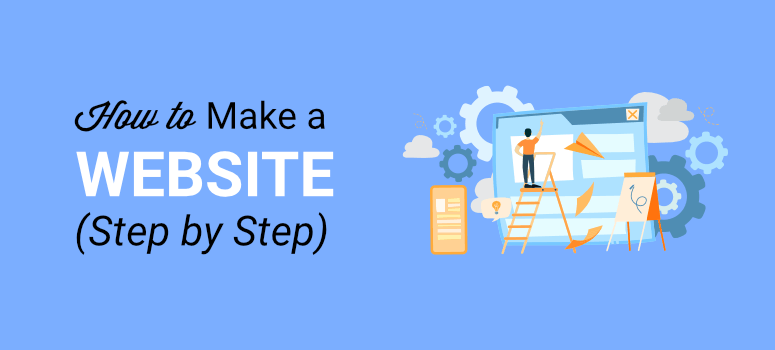Creating a website might seem like a daunting task, but with the right tools and guidance, it can be a straightforward and rewarding experience. Whether you’re building a personal blog, a business site, or an online store, the steps to create a website are quite similar. In this guide, I will walk you through the process of creating a website in an easy, step-by-step manner.

Step 1: Define Your Purpose
Before you start building your website, it’s essential to have a clear understanding of its purpose. Ask yourself questions like: What is the main goal of the website? Who is the target audience? What kind of content will you be sharing? Defining the purpose of your website will guide you in making decisions about its design, structure, and content. For example, if you’re creating a personal blog, your focus might be on sharing articles and stories, while a business site might require pages that showcase products, services, and customer testimonials.
Step 2: Choose a Domain Name

Your domain name is the address where your website will live on the internet (e.g., www.Mywebsite.com). It should be memorable, easy to spell, and relevant to your site’s content or your brand. If you’re building a business site, using your company name as the domain is often a good idea. Many domain registrars like GoDaddy, Namecheap, or Google Domains allow you to search for and purchase available domain names. Keep in mind that popular domain extensions like .com are often preferred, but there are many other options like .net, .org, and even newer ones like .blog or .store.
Step 3: Select a Hosting Provider
Once you have your domain name, you’ll need a hosting provider to store your website’s files and make them accessible on the internet. There are many hosting providers available, each offering different plans and features. For beginners, shared hosting is a cost-effective option, where your site shares server space with other websites. Some popular hosting providers include Bluehost, HostGator, and SiteGround. When selecting a host, consider factors like uptime (the percentage of time your site will be available online), customer support, and scalability (the ability to upgrade your plan as your site grows).
Step 4: Choose a Website Builder or CMS
A website builder or content management system (CMS) is the tool you’ll use to create and manage your website. There are many options available, each with its own set of features. For those without technical skills, website builders like Wix, Weebly, or Squarespace offer drag-and-drop interfaces that make designing a site easy. These platforms often include templates, so you don’t need to start from scratch.
For more control and flexibility, especially if you’re planning to add a lot of content, a CMS like WordPress is a great choice. WordPress powers a significant portion of the websites on the internet and offers thousands of themes and plugins that can help you customize your site. While WordPress does have a steeper learning curve than some website builders, it’s an excellent option for those who want more advanced features.
Step 5: Design Your Website

The design of your website plays a crucial role in how visitors perceive it. A well-designed website should be visually appealing, easy to navigate, and aligned with your brand. Start by choosing a template or theme that suits your purpose. Most website builders and CMS platforms offer a range of templates, many of which are customizable.
When designing your site, consider the following elements:
- Layout: The layout should be clean and organized, with clear headings and subheadings. Avoid cluttering your pages with too much content or too many images.
- Color Scheme: Choose colors that align with your brand and are easy on the eyes. Consistency in color usage across your site helps create a cohesive look.
- Typography: Use fonts that are easy to read. Generally, it’s best to stick to two or three fonts to maintain a professional appearance.
- Navigation: Your site should be easy to navigate, with a clear menu that helps visitors find the information they need. Important pages like ‘Home,’ ‘About,’ ‘Services,’ and ‘Contact’ should be easily accessible.
Step 6: Create Quality Content
Content is king when it comes to websites. High-quality, relevant content will not only attract visitors but also encourage them to stay on your site longer and return in the future. Depending on your site’s purpose, content might include blog posts, product descriptions, service pages, or multimedia like videos and images.
When creating content, keep your audience in mind. Write in a clear and engaging manner, and make sure your content provides value to your visitors. Also, pay attention to search engine optimization (SEO) by including relevant keywords in your content, titles, and meta descriptions. SEO is crucial for helping your site rank higher in search engine results, driving more organic traffic to your site.
Step 7: Optimize for Mobile Devices
With the increasing use of smartphones and tablets, it’s essential that your website is mobile-friendly. Many website builders and CMS platforms offer responsive design features, which automatically adjust your site’s layout based on the device being used. However, it’s still important to test your site on different devices to ensure it looks good and functions properly across all screen sizes.
Step 8: Test and Launch Your Website
Before launching your website, thoroughly test it to ensure everything works as expected. Check all the links to make sure they direct visitors to the correct pages, and test any forms or interactive elements. It’s also a good idea to ask friends or colleagues to review your site and provide feedback on its usability and design.
Once you’re confident that your site is ready, it’s time to launch! Announce your new website on social media, through email newsletters, or any other channels available to you. If you’re running a business, consider running a promotional campaign to drive traffic to your site.
Step 9: Monitor and Maintain Your Website
Creating a website isn’t a one-time task; it requires ongoing maintenance to keep it running smoothly. Regularly update your content to keep it fresh and relevant. If you’re using a CMS like WordPress, make sure to update the software, themes, and plugins to the latest versions to protect against security vulnerabilities. Additionally, monitor your site’s performance using tools like Google Analytics, which can provide insights into your visitors’ behavior and help you make data-driven decisions to improve your site.

Conclusion
Building a website may seem complex, but by following these steps, you can create a professional and functional site with relative ease. Remember that the key to a successful website is not just in its design, but in the quality of the content and the experience it offers to visitors. By continuously refining and updating your site, you’ll be able to grow your online presence and achieve your goals, whether it’s attracting readers, generating leads, or selling products.

Get involved!
Comments